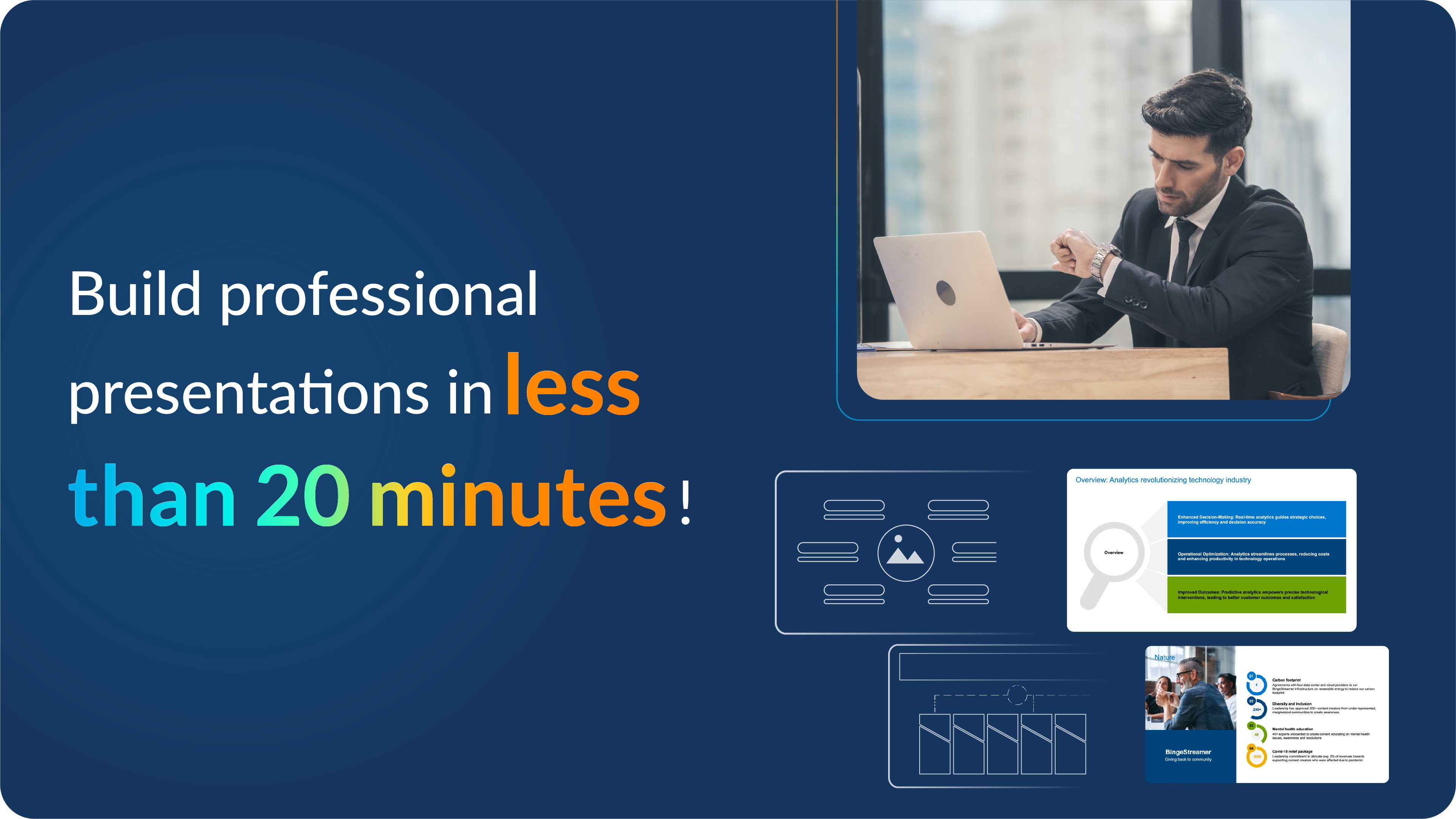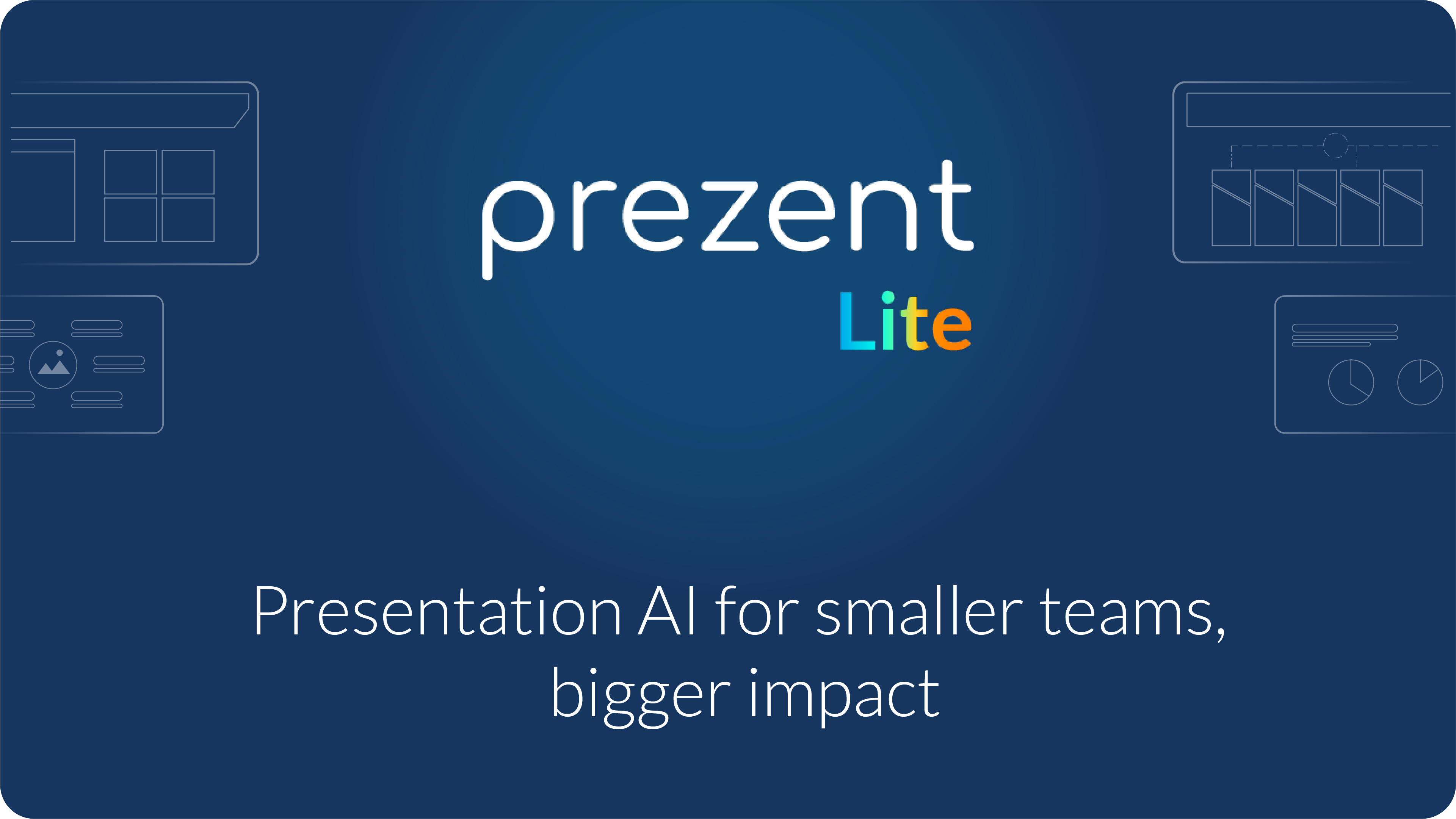Mastering the art of asking open-ended questions: Best tips, question examples & common uses

Effective communication is the base of successful interactions in both personal and professional settings. At the heart of this communication lies the art of asking the right questions. Among the most powerful tools in a communicator’s toolkit are open-ended questions. These questions invite comprehensive, thoughtful responses, unlike closed-ended questions, which often yield simple "yes" or "no" answers. In this article, we will explore how to ask open-ended questions, the benefits of using them, and provide common examples of open-ended questions to help you enhance your communication skills.
What is an open-ended question?
What is the meaning of open-ended questions? Well, open-ended questions are inquiries designed to encourage a full, meaningful answer using the subject’s own knowledge, feelings, or experiences. Unlike closed-ended questions, which limit the respondent to a simple, often one-word answer, open-ended questions foster a more in-depth dialogue. These questions typically begin with words like "how," "what," "why," or "describe," making it impossible for the respondent to answer with a mere "yes" or "no."
Example of an open-ended question: Instead of asking, "Did you enjoy the meeting?" (a closed-ended question), you could ask, "What were the highlights of the meeting for you?" This approach opens the door to a broader discussion, providing valuable insights into the respondent’s experiences and perspectives.
Why use open-ended questions?
Open-ended questions are integral to effective communication for several reasons:
- Encouraging detailed responses: These questions invite the respondent to provide a more comprehensive answer, offering deeper insights into their thoughts and feelings. This is particularly useful in settings where understanding the respondent’s perspective is crucial, such as in surveys or interviews.
- Fostering critical thinking: When you ask open-ended questions, you prompt the respondent to think critically and reflect on their answers. This often leads to more thoughtful and insightful responses, which can be invaluable in decision-making processes.
- Building rapport and trust: By using open-ended questions, you show genuine interest in the respondent’s views. This can help build rapport and trust, whether in a personal conversation or a professional environment, such as team management or client relations.
- Uncovering hidden insights: Open-ended questions allow you to uncover information that might not surface through closed-ended questions. This is especially beneficial in contexts like qualitative research or customer feedback, where understanding the "why" behind a response is as important as the response itself.
- Facilitating meaningful conversations: These questions keep the conversation flowing and prevent it from becoming a series of rapid-fire, shallow exchanges. They encourage a dialogue that can lead to a deeper understanding of the subject matter.
Open-ended vs. closed-ended questions
Understanding the difference between open-ended and closed-ended questions is fundamental to mastering the art of communication.
- Closed-ended questions: These questions are designed to elicit a specific, usually brief, response. They are useful when you need to obtain straightforward information or when time is of the essence. For example, "Did you complete the project?" is a closed-ended question that seeks a yes or no answer. While efficient, these questions often do not allow the respondent to elaborate or provide additional context.
- Open-ended questions: In contrast, open-ended questions are designed to encourage a full, rich response. They are particularly useful when the goal is to explore ideas, understand motivations, or gather qualitative data. For example, "What challenges did you encounter while completing the project?" is an open-ended question that encourages the respondent to share their experiences in detail.
When to use each type of question:
- Close ended questions are ideal for scenarios where you need quick, specific answers, such as confirming facts or making decisions that require concise input.
- Open-ended questions are best used when you want to explore a topic in depth, gather feedback, or foster a conversation that goes beyond the surface.
.webp)
Crafting good open-ended questions
Creating good open-ended questions is both an art and a science. Here are some principles to guide you in creating effective and good open-ended questions:
- Begin with open-ended prompts: Use words like "how," "what," "why," or "describe" to start your questions. These prompts naturally lead to more expansive responses. Example: Instead of asking, "Do you think the new policy is effective?" (closed), ask, "What are your thoughts on the effectiveness of the new policy?" (open). This encourages the respondent to provide a more detailed response.
- Avoid leading questions: A leading question subtly suggests a particular answer, which can bias the respondent’s response. To get the most honest and uninfluenced answers, ensure your questions are neutral. Example: Instead of asking, "Why do you prefer our product over the competition?" (leading), ask, "What factors influenced your choice of product?" (neutral).
- Keep it simple and focused: While open-ended questions should allow for a range of responses, they should also be clear and focused. Avoid overly broad or complex questions that might confuse the respondent. Example: "How can we improve our customer service?" is clear and focused compared to a vague question like, "What do you think of our company?"
- Encourage elaboration: Sometimes, respondents may give brief answers even to open-ended questions. In such cases, follow up with prompts like, "Can you tell me more about that?" or "Why do you feel that way?" This encourages the respondent to expand on their initial response.
- Use silence effectively: After asking an open-ended question, resist the urge to fill the silence immediately. Give the respondent time to think and formulate their response. This often leads to more thoughtful and comprehensive answers.
.webp)
Example in action:
Closed-ended question: "Did you find the product helpful?"
Purpose: To understand which features were most helpful and why.
Exploratory prompt: Use "how" to prompt more detailed feedback.
Open-ended question: "How did the product help you, and what features did you find most useful?"
By following this formula, you can systematically convert any closed-ended question into an open-ended one that prompts richer, more insightful responses.
Common mistakes to avoid while asking open-ended questions
Being too vague: Open-ended questions should encourage discussion, but overly broad questions like, "What do you think?" can confuse respondents. Aim for clarity while keeping the question open.
Overcomplicating the question: Avoid multi-part questions that overwhelm respondents. Simplify your inquiries to focus on one aspect at a time for clearer, more thoughtful responses.
Not listening to the answer: The true value of open-ended questions comes from actively listening and responding to the insights shared, allowing for deeper conversation.
Asking too many questions at once: Overloading respondents with multiple questions can be overwhelming. Stick to one question at a time to maintain a natural conversational flow.
Interrupting the respondent: Interruptions can disrupt the respondent’s thought process, leading to incomplete answers. Allow them to finish before moving on.
Using jargon or complex language: Ensure your questions are clear and accessible by avoiding technical jargon or complex language that could confuse the respondent.
Failing to adjust based on the response: Be flexible in your approach, allowing the conversation to follow its natural course instead of sticking rigidly to a script.
Tips for asking effective open-ended questions
Asking effective open-ended questions requires a thoughtful approach that blends curiosity, empathy, and active listening. Let’s look into each tip to help you refine your questioning technique:
1. Be curious, not interrogative
Curiosity is the foundation of meaningful conversations. When you approach a discussion with genuine curiosity, it shows that you’re interested in the other person’s thoughts and experiences. This creates a more relaxed environment, encouraging the respondent to share more openly.
Avoid sounding like you’re conducting an interrogation. Interrogative questioning can make the respondent feel defensive or pressured, which might lead them to withhold information or provide superficial answers. Instead, frame your questions in a way that conveys your interest in their perspective. For example, instead of asking, "Why didn’t you complete the task?" you might ask, "What challenges did you face in completing the task?" This slight adjustment can make a significant difference in how the question is received.
2. Encourage elaboration
Sometimes, the initial response to an open-ended question might be brief. In such cases, encouraging the respondent to elaborate can lead to richer, more detailed answers. Follow-up questions like, "Can you tell me more about that?" or "Why do you feel that way?" invite the respondent to explore their thoughts further.
This technique is particularly useful when you sense that the respondent has more to say but might need a gentle nudge to continue. Encouraging elaboration shows that you value their input and are willing to listen to more than just the surface-level details. It also helps uncover deeper insights that might not be immediately apparent.
3. Use silence effectively
Silence can be uncomfortable, but it’s a powerful tool in conversation. After asking an open-ended question, resist the urge to fill the silence immediately. Giving the respondent time to think and formulate their response can lead to more thoughtful and considered answers.
Silence signals that you’re giving the other person space to reflect. It also shows that you’re patient and genuinely interested in their response rather than rushing to the next question. This can encourage the respondent to take their time and provide a more comprehensive answer rather than a quick, superficial one.
4. Practice active listening
Active listening is crucial when you ask open-ended questions. It’s not enough to simply ask the question—you need to show that you’re fully engaged with the respondent’s answer. This involves maintaining eye contact, nodding, and using verbal affirmations like "I see" or "That’s interesting."
Beyond these non-verbal cues, active listening also means summarizing or paraphrasing what the respondent has said before moving on to the next question. For example, you might say, "So, if I understand correctly, you feel that the main challenge is the lack of communication within the team. Is that right?" This not only confirms that you’ve understood their point but also gives the respondent a chance to clarify or expand on their answer.
5. Tailor your questions to the context
The effectiveness of an open-ended question often depends on the context in which it’s asked. Consider the setting, the nature of your relationship with the respondent, and the specific goals of the conversation when crafting your questions.
In a professional setting, for instance, you might ask, "What are the key factors driving this project?" which is formal and focused on business outcomes. In a more casual setting, like a conversation with a friend, you might ask, "What’s been on your mind lately?" which is open-ended but more personal and informal.
Tailoring your questions to fit the context ensures that they are appropriate and respectful of the respondent’s situation, making it more likely that they will engage meaningfully.
Open-ended questions examples
To better understand how to craft and use the questions, here are open-ended question examples across different contexts:
In business meetings and presentations
- "How do you think we can better align our team’s goals with the company’s overall strategy?"
- "What potential risks do you see in this project, and how can we mitigate them?"
- "What resources do you believe are essential for the success of this project?"
- "How can we improve communication among team members to enhance collaboration?"
- "What are the most significant obstacles you anticipate, and what solutions can we implement?"
In customer feedback surveys
- "What specific features of our product do you find most useful, and why?"
- "How can we enhance your overall experience with our service?"
- "What motivated you to choose our service over others?"
- "What additional products or services would you like to see us offer?"
- "How can we better support your needs in the future?"
In interviews
- "Can you tell me about a time when you had to work under pressure? How did you manage it?"
- "Describe a situation where you had to adapt quickly to changes. How did you handle it?"
- "Can you share an example of when you took the initiative on a project? What was the outcome?"
- "Tell me about a time when you faced conflict within a team. How did you resolve it?"
- "What is a significant professional accomplishment you are proud of, and how did you achieve it?"
In sales
- "What are the most critical factors you consider when evaluating a potential supplier?"
- "How do you assess the long-term value of a supplier partnership?"
- "What past experiences have influenced your criteria for selecting a supplier?"
- "How important are sustainability practices in your decision-making process for choosing suppliers?"
- "What key benefits do you seek from a supplier, and how do we measure up to those expectations?"
These questions are designed to promote in-depth discussions and gather valuable insights across various scenarios.
Frequently asked questions (FAQs)
1. What is the difference between open-ended and closed-ended questions?
Open-ended questions are designed to elicit detailed, thoughtful responses, often beginning with words like "how" or "why." In contrast, a closed-ended question can be answered with a simple single-word answer like "yes" or "no," making them useful for gathering specific, straightforward information.
2. How do I craft effective open-ended questions for surveys?
To craft effective open-ended questions, start with prompts that encourage elaboration, such as "what" or "how." Avoid closed questions and instead focus on questions that cannot be answered briefly. This approach helps gather rich, qualitative data, making your survey questions more insightful and valuable.
3. Why should I add open-ended questions to my survey strategy?
Adding open-ended questions to your survey strategy allows respondents to provide more detailed feedback, which is essential for uncovering insights that multiple-choice questions might miss. Open-ended questions let customers express their thoughts in their own words, leading to more actionable data.
4. How can open-ended questions encourage respondents to share more information?
Open-ended questions encourage respondents to think more deeply and provide comprehensive answers. Unlike closed-ended questions, which often result in brief replies, open-ended queries promote a dialogue that helps you get as much information as possible from your respondents.
5. What are some good follow-up questions to ask after an open-ended question?
Good follow-up questions include prompts like "why did you choose" that specific option or "how did that make you feel?" These questions help delve deeper into the respondent's initial answer, providing even more valuable information and insights.
6. How can I turn a closed-ended question into an open-ended one?
To transform a closed-ended question into an open-ended one, shift the focus from a single-word answer to an exploration of thoughts or feelings. For example, instead of asking, "Did you like our service?" (a closed-ended question), you could ask, "What aspects of our service did you find most satisfying, and why?" This encourages the respondent to provide a more detailed response, offering deeper insights.
7. What are some examples of good open-ended questions to ask in a survey?
Good open-ended questions in a survey might include "Why did you choose our product?" or "How can we improve your experience?" These questions invite respondents to share detailed feedback, which can help uncover areas for improvement and provide valuable insights into customer preferences and behavior.
Leveraging Prezent and using open-ended questions in presentations
Prezent is a powerful platform designed to streamline the creation of professional, on-brand presentations. By integrating open-ended questions into your Prezent presentations, you can turn a standard presentation into an engaging dialogue. This approach not only conveys information but also invites valuable input, making your presentations a tool for both communication and collaboration.
- Structured storytelling: Use Prezent’s Story Builder to create a logical flow in your presentations. Integrate open-ended questions at key moments to engage your audience and encourage discussion. For example, instead of just presenting data, ask, "What market trends do you think will most impact our strategy?"
- Professional slide designs: Customize Prezent's Slide Library templates to highlight open-ended questions visually, ensuring they stand out and prompt audience interaction. A question like, "How can we better align our product features with customer needs?" can be enhanced with a compelling slide design.
- Collaborative presentations: Utilize the Presentation Library to create and share presentations that include open-ended questions, fostering a collaborative environment. This can drive more meaningful discussions during team meetings or workshops.
To experience the full potential of Prezent and see how it can transform your presentations, why not give it a try? Sign up for a free trial account today, or schedule a demo with an expert to explore how this platform can work for you.













